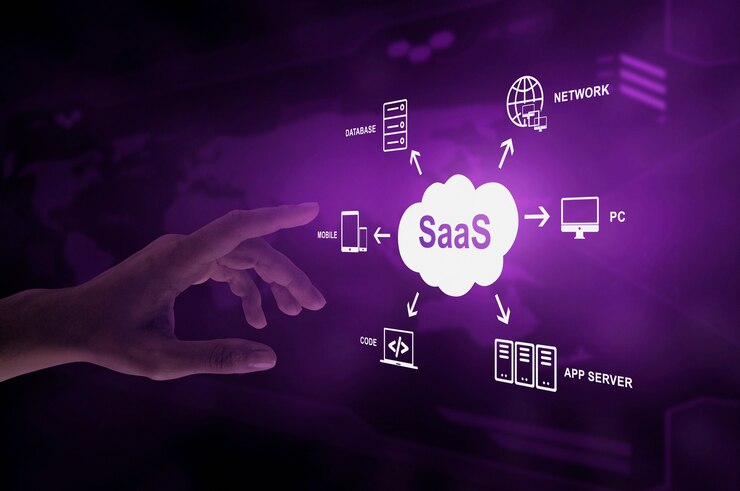Unraveling the Power of SaaS: How Software as a Service Revolutionizes Business
In today’s fast-paced digital landscape, businesses are constantly seeking innovative solutions to streamline their operations, enhance efficiency, and drive growth. One such revolutionary concept that has been transforming the way software is delivered and consumed is Software as a Service (SaaS). In this blog post, we’ll delve into the essence of SaaS, explore its benefits, and examine how it is reshaping the business landscape.
Understanding SaaS
Software as a Service, or SaaS, is a software delivery model where applications are hosted by a third-party provider and made available to customers over the internet. Unlike traditional software installations that require users to purchase, install, and maintain software on their own hardware, SaaS offers a subscription-based model where users can access the software via a web browser or application interface.
Key Features of SaaS
- Accessibility: SaaS applications are accessible from any internet-enabled device, enabling users to access their data and tools from anywhere, at any time.
- Scalability: SaaS solutions can easily scale up or down based on the needs of the business, allowing organizations to adapt to changing requirements without significant upfront investments.
- Automatic Updates: SaaS providers handle software updates and maintenance, ensuring that users always have access to the latest features and security patches without the need for manual intervention.
- Cost-Effectiveness: With SaaS, businesses can avoid the hefty upfront costs associated with purchasing software licenses and hardware infrastructure, opting instead for a predictable subscription-based pricing model.
- Flexibility: SaaS applications often offer customizable features and configurations, allowing businesses to tailor the software to their specific requirements and workflows.
Benefits of SaaS for Businesses
- Lower Total Cost of Ownership (TCO): By eliminating the need for upfront infrastructure investments and ongoing maintenance costs, SaaS can significantly reduce the total cost of ownership for businesses.
- Improved Accessibility and Collaboration: With SaaS applications accessible via the cloud, teams can collaborate more effectively, regardless of their geographical location, fostering productivity and innovation.
- Faster Time-to-Market: SaaS solutions can be deployed rapidly, allowing businesses to quickly implement new software and adapt to changing market conditions, giving them a competitive edge.
- Scalability and Elasticity: SaaS applications can scale effortlessly to accommodate growing user bases and increasing workloads, ensuring that businesses can expand without constraints.
- Enhanced Security: SaaS providers invest heavily in robust security measures, including data encryption, regular security audits, and compliance certifications, to safeguard sensitive information and mitigate cybersecurity risks.
Real-World Applications of SaaS
- Customer Relationship Management (CRM): SaaS-based CRM platforms such as Salesforce and HubSpot enable businesses to manage customer interactions, streamline sales processes, and drive customer engagement.
- Project Management: SaaS project management tools like Asana and Trello empower teams to collaborate effectively, track project progress, and meet deadlines efficiently.
- Human Resources (HR) Management: SaaS HR solutions such as BambooHR and Workday simplify HR processes, including recruitment, employee onboarding, performance management, and payroll.
- Accounting and Finance: SaaS accounting software like QuickBooks and Xero automate financial tasks, such as invoicing, expense tracking, and financial reporting, helping businesses maintain accurate financial records.
- Collaboration and Communication: SaaS collaboration tools such as Google Workspace (formerly G Suite) and Microsoft 365 facilitate real-time communication, document sharing, and collaborative editing, enhancing teamwork and productivity.
The Future of SaaS
As technology continues to evolve and businesses increasingly embrace digital transformation, the future of SaaS appears brighter than ever. With advancements in artificial intelligence, machine learning, and data analytics, SaaS applications are poised to become even more intelligent, intuitive, and impactful, driving innovation and empowering businesses to thrive in the digital age.
In conclusion, Software as a Service (SaaS) represents a paradigm shift in the way software is delivered, consumed, and managed. By offering accessibility, scalability, cost-effectiveness, and flexibility, SaaS empowers businesses of all sizes to leverage cutting-edge technology and drive success in today’s competitive marketplace. As businesses continue to adopt SaaS solutions across various industries and sectors, the transformative potential of SaaS remains unparalleled, shaping the future of business innovation and growth.


